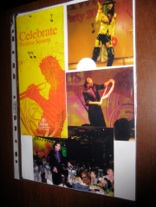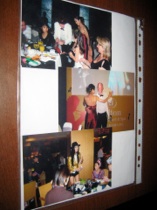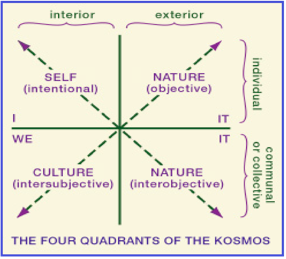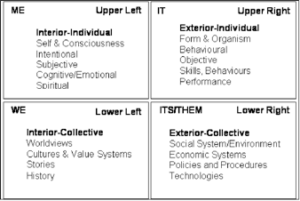

Contents:
My own apartment in paradise
Internet Fiasco
New Years at the Hilton Resort
Thinking out of the Box
Integral Thinking and a new Vision of Health
Dispatch from China 7 (1)
Dateline: Sanya/Shanghai 17 March, 2008
It has been a year since my last Dispatch and its about time I tried to catch up (I have actually had some requests to do so — I have also been told to keep them short). It was another year filled with pursued and failed opportunity, much joy, hard work and frustration. When I look back, there have been some major accomplishments amongst the many exciting prospects going nowhere. And through it all, many lessons learned (or more appropriately relearned — it seems that I have to keep learning the same ones).
MY OWN APARTMENT IN PARADISE
After four and a half years of frustration with a previous partner, I am now living in a dream come true — a beautiful seaside apartment overlooking the South China Sea.
How did this happen you ask? Well, I got rid of the partner. My dear friend, Alan, the Doctor from Beijing bought the partner out and now is the co-owner with me. Once that happened, we were able to complete and decorate the place in less than three months last summer — three months after four years of dormancy. The three months weren’t without a good deal of frustrating lunacy, much of which I have forgotten in my present contentment. And I think I’ll leave that way and just enjoy what is my proudest accomplishment in China to date.
I am including some pictures so that you might share some of the joy with me. (see [bad link] http://picasaweb.google.com/suttonleming/DispatchFromChina71)
INTERNET FIASCO
For six months I was diverted by another grand vision in the wrong hands.
Some of you may have heard of the grand scheme for creating a new advertising platform on the internet to be launched first in China. It was a good idea — give the advertisers the specific demographic they want and they pay only for those who have been guaranteed to view their ad. The incentive for the viewer is the very real opportunity to win immediate cash (a sure-fired incentive for the hugh gambling-obsessed Chinese internet viewer base). The concept had everything going for it except the personnel capable of executing it.
The man running this project is a kind-hearted, bull-headed, spoiled, rich Pollyanna who can afford to waste money on extravagant offices in Sanya and Beijing and a crew of half-committed, unproductive, incompetent con men. All it takes for this guy is a constant smile on your face and never saying no or critiquing his mercurial approach. I tried for six months to pick up the pieces the others were dropping but finally had to give up for lack of any support from the top. And as usual I waited too long to quit (see last Dispatch).
This grand idea may work somewhere else (he was also going to launch in the Philippines) but it is never going to work in China with him and his crew doing it. He is just too susceptible to glib Chinese happy talk and glad-handed expat flimflam. He is incapable of focusing on the concrete details and real obstacles needed to operationalize such a vision.
Another lesson learned!
NEW YEARS AT HILTON RESORT
Believe it or not (after my last experience) I agreed to provide the Holiday entertainment for another five-star Resort in Sanya. This time it was for the new Hilton Resort. Again it was a last minute request (these people do not seem to plan ahead). Three weeks in advance, they ask me if I can provide “some magic and otherwise activate” their New Year festivities. Right up my alley but short notice.
Luckily I was able to get two of my best magicians (the amazing Ukrainian who does the incredible bird production and the Chinese magician I have worked with many times before). And I talked the Hilton into the idea that I, with a dancing partner, posing as ordinary guests, would guarantee “an active” party.
The plan was for the three of us to do close up magic walking around the premises (Restaurants, Lobby, Poolside….etc) during the days before and after New Years and to pull out all stops for our stage performances on New Year’s Eve. The theme for New Year’s Eve was the “Magic of Dance.” Throughout the lavish dinner, the floor show included the house band playing, a local dance troupe doing a variety of numbers in between our two segments of the stage magic — first the lovely Erica dazzling them with cards and discs and then the grand finale with Sergey, the “Amazing Fox.”
My partner (a dancer I brought down from Beijing) and I were seated and eating amongst the other guests. And just at the opportune time it was our task to jump up and “activate” the other guests into full participation with the evening’s festivities. This was carefully calculated to build up to the New Year’s count-down crescendo. First it was just the impulsive act of dancing to the performing house band on stage (of course, this was filmed and projected onto the large screens throughout the ballroom) to implant the idea in the guest’s minds that it was alright to become more than just an observer. As the evening progressed more and more others joined us (initially with our prompting) and before the evening was over the entire ballroom was pulsating in a limbda line on its way to the beach where the fabulous Latin Project from Shanghai would ring in the New Year. — We had done our job!
All in all, it was a great success. The Resort and its guests were quite pleased and we all got paid without even any mention of the standard after the fact “renegotiation”.
(for visuals see [bad link] http://picasaweb.google.com/suttonleming/DispatchFromChina71)
THINKING OUT OF THE BOX
Wholistic thinking, what I used to call “systems thinking” can help clarify your way and create obstacles on the path at the same time. What I am learning now is that I am not very good at overcoming these self-imposed obstacles. My impatience with tunneling vision derails me every time.
It is always a mixed blessing for me to be asked to broaden a project’s thinking. While, I love the intellectual challenge I now know lurking over the horizon of an expanded vision is a whole new series of obstacles that dwarf those circumvented by the new broaden view. Time and time again (whether it be the Internet concept above, the Wine Company, Shanghai English Program or the Entertainment Productions before it) I am stopped by barriers of my own making.
Now I have been asked to help expand the mission of a hospital — to help create a vision of a hospital delivering “Integrative Medicine.” I began with creating the piece below on “Integral Thinking” to stimulate some “out-of-the-box” thinking among the staff.
Quote:
Integral Thinking and a New Vision of Health
Integral Thinking
An Integral Vision is one where everything we know (by whatever means we know it) fits together.
Integral thinking is a process best facilitated by the brilliant framework created by Ken Wilber (1). The framework provides a map for all of life’s terrain — an “integral operating system” for thinking about anything. It shows us the profound patterns that connect all that we know and reminds us not to leave any thing out in our search for understanding.
Every event that manifests has multiple dimensions. The Integral Map reminds us that you can look at any event from the point of view of the “I” (or how I personally see and feel about the event); from the point of view of the “we” (how not just I but others see the event); and as an “it” (or the objective facts of the event). An integrally informed path will take all of these dimensions into account, and thus arrive at a more comprehensive and effective approach.
The following schematic shows 4 quadrants representing four major dimensions (or perspectives) of this map’s all-inclusive terrain. It shows the “I” (the inside of the individual), the “it” (the outside of the individual), the “we” (the inside of the collective) and the “its” (the outside of the collective). In other words, the 4 quadrants — which represent four basic ways at looking at anything — turn out to be very simple: they are the inside and the outside of the individual and the collective.


Historically, each of these perspectives (represented by each quadrant) has competed for predominance. Some contend that matter is primary reality, others argue that spirit and consciousness are the primary ingredients. While others contend that all things can be reduced to the base of economic reality or that all knowledge is just social construction. Commenting on this search for ultimate reality, Wilber writes: “If you think that matter is the ultimate reality (i.e. the Upper-right quadrant is the only real quadrant) then any spiritual experience or belief will be nothing but an illusion, epiphenomena of brain states and their physiological fireworks… ”
“If you think spirit and consciousness (Upper-left quadrant) are the ultimate realities, then you will believe just the opposite: the entire world of material form is the fallen realm of illusion, and those who believe in it are lost in ignorance, sin, maya, samsara.”
“If you think the systems view of reality (Lower-right quadrant) is the ultimate view, then all religious and spiritual beliefs are noting but manifest structure-functions that are determined by the real realities of the social system, the techno-economic base, and interwoven webs of dynamic processes.”
“And if you think the Lower-left quadrant is the only real quadrant, then all aspects of knowledge, including all of our ideas about systems themselves, not to mention God and Spirit, are nothing but social constructions. Not “I” nor “it” nor “its”are finally real, but rather the almighty “we” creates literally all reality.”
To the integral thinker seeking an integral vision all the quadrants are equally primordial, none is more real or primary than the others, they all arise and evolve together. Wilber concludes, “Ultimate reality, if it is to be found anywhere, is found in their simultaneous arising and radiant display, mutually creating and mutually sustaining each other.”
An Integral Vision of Health
Nowhere is the Integral Model more applicable than in viewing Health and Medicine, and it is being increasingly adopted by health-care practitioners around the world.
Orthodox or conventional medicine is a classic Upper-right quadrant approach. It deals almost entirely with the physical organism using physical interventions: surgery, drugs, medication, behavioral modification. Orthodox medicine believes essentially in the physical causes of physical illness, and therefore prescribes mostly physical interventions. But the integral model claims that every physical event has at least 4 dimensions (the quadrants), and thus even physical illness must be looked at from all 4 quadrants. The integral model does not claim the Upper-right quadrant is not important, only that it is one-fourth of the story.
The recent explosion of interest in alternative care — not to mention such disciplines as psychoneuroimmunology — has made it quite clear that the person’s interior states (their emotions, psychological attitude, imagery, and intentions) play a crucial role in both the cause and the cure of even physical illness. In other words, the Upper-left quadrant is a key ingredient in any comprehensive medical care. Visualizations, affirmations, and conscious use of imagery have empirically been shown to play a significant role in the management of most illness, and outcomes have been shown to depend on emotional states and mental outlook.
But as important as those subjective factors are, individual consciousness does not exist in a vacuum; it exists inextricably embedded in shared cultural values, beliefs, and worldviews. How a culture views particular illness — with care and compassion or derision and scorn — can have a profound impact on how an individual copes with that Illness, which can directly affect the course of the physical illness itself. The Lower-left quadrant includes all of those enormous number of intersubjective factors that are crucial in any human interaction — such as the shared communication between doctor and patient; the attitudes of family and friends and how they are conveyed to the patient; the cultural acceptance (or derogation) of the particular illness (e.g. AIDS) and the very values of the culture that the illness itself threatens. All of those factors to some degree are causative in any physical illness and cure.
Of course, in practice, this quadrant needs to be limited to those factors that can be effectively engaged — perhaps doctor and patient communication skills, family and friends support groups, and a general understanding of cultural judgments and their effects on illness. Studies consistently show, for example, that cancer patients in support groups live longer than those without similar cultural support. Some of the more relevant factors from the Lower-left quadrant are thus crucial in any comprehensive medical care.
The Lower-right quadrant concerns all those material, economic, and social factors that are almost never counted as part of the disease entity, but in fact — like every other quadrant — are causative in both disease and cure. A social system that cannot deliver food will kill you (as famine-wracked countries demonstrate daily). In the real world, where every entity has all 4 quadrants, a virus in the Upper-right quadrant might be the focal issue, but without a social system (Lower-right) that can deliver treatment, you will die. That is not a separate issue, it is central to the issue because all occasions have 4 quadrants. The Lower-right quadrant includes factors such as economics, insurance, social delivery systems, and even things as simple as how a hospital room is physically laid out (does it allow ease of movement, access to visitors, etc ?) — not to mention items like environmental toxins.
In short, a truly effective and comprehensive view of Health and plan for Medical treatment would be all-quadrant — would take all of these realities into account. Not only is this type of integral treatment more effective, it is more cost-effective.– which is why even organizational medicine is taking this view more seriously.
Integral Health brings its own assignments unique to each of us. We will each need to assume personal responsibility for remembering that which is in us all and for realizing the relationship between nature and human consciousness. This is the critical step in understanding the “dis-ease” catalyzed when this relationship is ruptured—and the health that arises when it is fully nourished.
Integrative/integral medicine involves a deep appreciation of multiple cultural perspectives. It is more than a union of conventional and alternative/complementary medical theory and practice. A health organization that aspires to deliver integrative/integral care is one that understands the multidimensional nature of healing, including body, mind, soul, spirit, culture and nature. It is truly the next step in health care incorporating all dimension of healing. Guangzhou is an ideal place to do this with the traditional Chinese medicine orientation of the joint venture partner and Dr. Lu’s leadership.
Notes
(1) Ken Wilber is a brilliant theorist and author of many profound and insightful books. His latest, “The Integral Vision” (Shambhala, 2007), from which most of this introduction to integral thinking was taken, is a good overview of his work over the past thirty years.
“Integral Thinking” can be seen as an extension of the philosophical approaches of Holism and Whole Systems Theory of the past. Like the concept of a hierarchy of nested systems, the elements within and between each of these quadrants are hierarchical, mutually interdependent and go through their own developmental sequence.
(2) Marilyn Schilitz and Tina Amorok with Marc S. Micozzi, “Consiousness & Healing: Integral Approaches to Mind-Body Medicine,” (Elsevier, St. Louis, 2005) Jenny Wade, “Changes of Mind: A Holonomic Theory of the Evolution of Consciousness,” (State University of New York Press, Albany, 1996).
Leonard A. Wisneski and Lucy Anderson, “The Scientific Basis of Integrative Medicine,” (CRC Press, New York, 2005).
David B. Sutton, Ph.D.
Well Centre International, Ltd.
suttonantaeus@mac.com
taowellnessnetwork@hotmail.com
133-3180-7270 — Shanghai Cell
133-0767-1390 — Sanya Cell
— END QUOTE —
Yup, a lot of scary new barriers here. And it doesn’t even begin to deal with the procedures necessary to operationalize this new exapnded vision. Look out David what are you cooking up for yourself? We will see were this goes — Probably nowhere but if it does the question is, “Will I let my limited tolerance of limitation get in the way?”
TO BE CONTINUED —
(In Dispatch 7 (2), Coming shortly.)